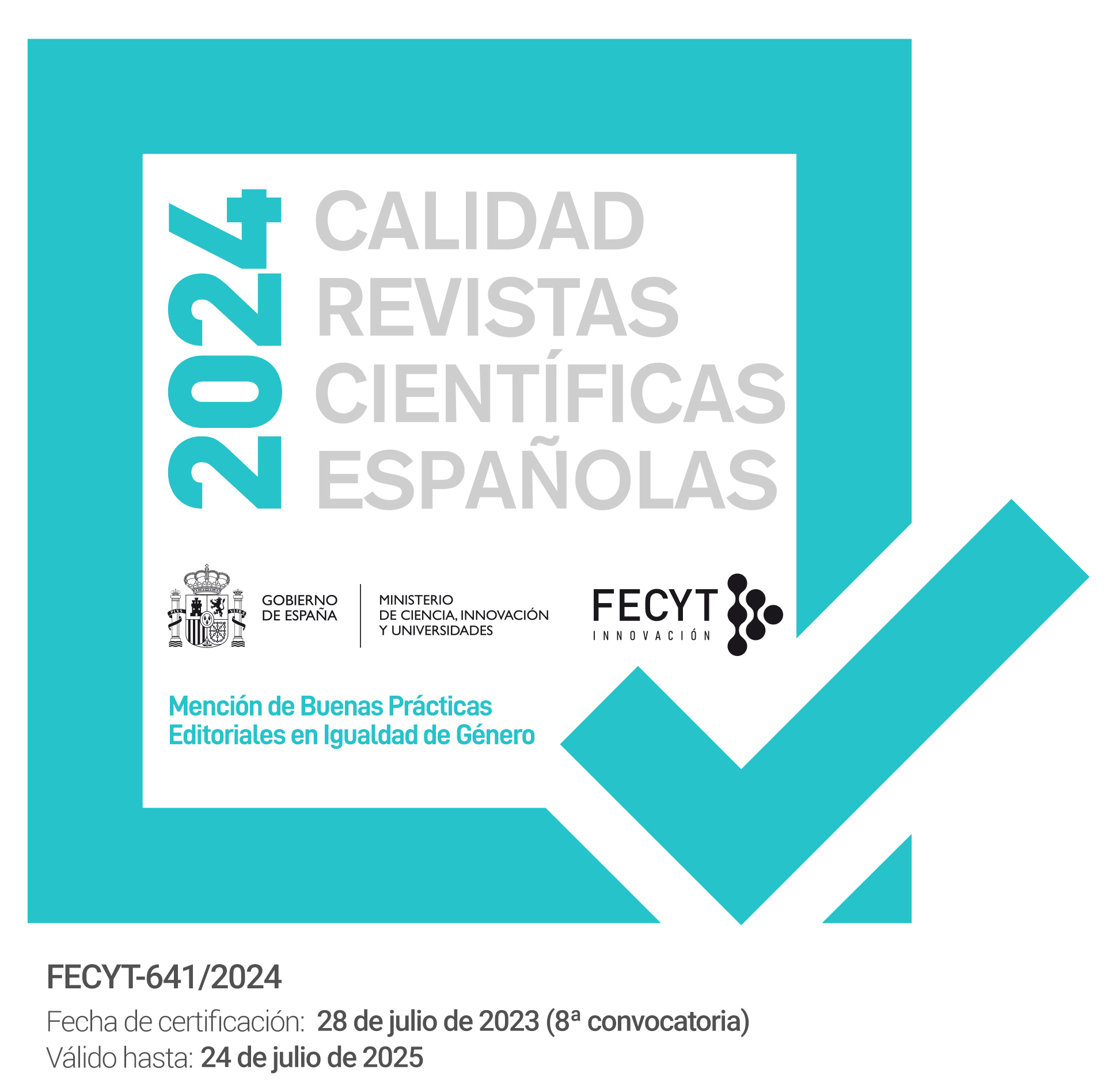Nueva toponimia en la Costa del Sol occidental (Málaga). Antropización, presión urbanística y nombres de lugar
DOI:
https://doi.org/10.12795/PH.2009.v23.i02.02Keywords:
place names, Málaga, Sun Coast, replacement, urban de-velopmentAbstract
In the last twenty years the place names of the western Sun Coast (Málaga) have undergone significant changes. This part of the pro- vince of Málaga has been greatly developed, and as a result, many new names have emerged. Usually these new names replace the his- torical ones, but in other cases, traditional toponyms are incorpo- rated into modern place names; and even new toponyms can revita- lize missing names.
Downloads
References
Fuentes documentales y cartográficas
AYUNTAMIENTO DE CASARES. ARCHIVO MUNICIPAL, Catastro del Marqués de la Ensenada, inédito, secular, I y II, 1752, sin catalogar.
AYUNTAMIENTO DE MANILVA. ARCHIVO MUNICIPAL, Amillaramiento, inédito, 1856, legajo 348.
AYUNTAMIENTO DE MANILVA. ARCHIVO MUNICIPAL, Amillaramiento, inédito, 1860, legajo 348.
AYUNTAMIENTO DE MANILVA. ARCHIVO MUNICIPAL, Documento de amojonamien-tos y deslindes: segregación de Manilva respecto a Casares, inédito, 1796, legajo 204.
DIRECCIÓN GENERAL DEL INSTITUTO GEOGRÁFICO Y ESTADÍSTICO, Mapa topográ-fico, E. 1:50.000, Jimena de la Frontera, 1071, 1917, [consultado en el Insti-tuto de Cartografía de Andalucía, nº de registro: 89-001096].
INSTITUTO GEOGRÁFICO Y ESTADÍSTICO, Planimetría, E. 1:25.000, Casares, 1874, [consultado en el Instituto de Cartografía de Andalucía, nº de registro: 89-004108].
INSTITUTO GEOGRÁFICO Y ESTADÍSTICO, Planimetría, E. 1:25.000, Manilva, 1875, [consultado en el Instituto de Cartografía de Andalucía, nº de registro: 89-004143].
INSTITUTO NACIONAL DE COLONIZACIÓN, Plano de Chullera y El Negro (Fincas). Cultivos de secano, E. 1:10.000, Manilva (Málaga), en IRYDA nº 288, pl. 2 (21), 1944(a) [consultado en el Instituto de Cartografía de Andalucía, nº de registro: 88-018464].
INSTITUTO NACIONAL DE COLONIZACIÓN, Plano de Sabinilla (Finca). Masas de cultivo, E. 1:50.000, Manilva (Málaga), en IRYDA nº 288, pl. 2 (24), 1944(b) [consultado en el Instituto de Cartografía de Andalucía, nº de registro: 88-018467].
JUNTA DE ANDALUCÍA. CONSEJERÍA DE OBRAS PÚBLICAS Y TRANSPORTES. INSTI-TUTO DE CARTOGRAFÍA DE ANDALUCÍA., Mapa Topográfico del Litoral de Andalucía, E. 1:5000, 1071/8-6, Casares y Estepona (Málaga), 2000.
JUNTA DE ANDALUCÍA. CONSEJERÍA DE OBRAS PÚBLICAS Y TRANSPORTES. INSTI-TUTO DE CARTOGRAFÍA DE ANDALUCÍA, Mapa Topográfico de Andalucía, E. 1:10.000, 1.071/4-4, Casares y Manilva (Málaga), 2001(a).
JUNTA DE ANDALUCÍA. CONSEJERÍA DE OBRAS PÚBLICAS Y TRANSPORTES. INSTI-TUTO DE CARTOGRAFÍA DE ANDALUCÍA, Mapa Topográfico de Andalucía, E. 1:10.000, 1071/4-3, Casares, Estepona, Manilva (Málaga), 2001(b).
JUNTA DE ANDALUCÍA. CONSEJERÍA DE OBRAS PÚBLICAS Y TRANSPORTES. INSTI-TUTO DE CARTOGRAFÍA DE ANDALUCÍA, Mapa Topográfico de Andalucía, E. 1:10.000, 1.075/4-1, Manilva (Málaga) y San Roque (Cádiz), 2001(c).
L. LIÑÁN DE MESA, Camino vecinal de Casares por Manilva a la carretera de Cádiz a Málaga. Trozo entre Manilva y la carretera, Manilva (Málaga), en Archivo de la Jefatura de la Unidad de Carreteras de Málaga del Ministerio de Fomento, legajo 304, 1930, [consultado en el Instituto de Cartografía de Andalucía, nº de registro: 88-096375].
MINISTERIO DE CULTURA. ARCHIVO HISTÓRICO PROVINCIAL DE MÁLAGA, Cédula de propiedad, nº 85, Manilva, 1948, nº de registro 11872.
MINISTERIO DE CULTURA. SECCIÓN NOBLEZA DEL ARCHIVO HISTÓRICO NACIONAL, “Deslinde de los
términos de Casares con la ciudad de Xibraltar, villa de Ximena y Gausín”, inédito, fondo Osuna, caja 153, documento 5, 1491.
SERVICIO GEOGRÁFICO DEL EJÉRCITO. CARTOGRAFÍA GENERAL DE ESPAÑA, Mapa General Serie L, E. 1:50.000, Jimena de la Frontera, 1.071/14-46, 1996.
Otros
M. D. GORDÓN PERAL, “Sobre la significación del diminutivo en toponimia”, Actas del V Congreso Internacional de Historia de la Lengua Española, Valencia, 2000, págs. 1505-1517.
M. G. KAPLANIAN, Alhambra. Diccionario español-árabe árabe-español, Barcelo-na, Ramón Sopena, 1974.
P. MADOZ, Diccionario Geográfico Estadístico Histórico de España y sus posesio-nes de Ultramar, Madrid, Biblioteca Santa Ana, 1850, s. v. Manilva.
J. D. MENDOZA PUERTAS, “Hidronimia de Manilva (Málaga)”, Interlingüística 18, Sevilla, en prensa.
D. ORTEGA CAVERO, Diccionario portugués-español, Barcelona, Ramón Sopena, 1966.
P. PANEQUE SALGADO, “Recursos hídricos y presión urbanística en la Costa del Sol Occidental (Málaga)”, en
P. Arrojo (ed.) Ciencia, técnica y ciudadanía: cla-ves para la gestión sostenible del agua, CD-Rom, Zaragoza: Fundación Nue-va Cultura del Agua, 2004.
S. RUHSTALLER, Toponimia de la región de Carmona, Berna Francke Verlag, 1992, págs. 311-318.
C. SMITH, Diccionario español-inglés english-spanish, Barcelona, Grijalbo, 1989.
M. VÁZQUEZ CANDILES, “Toponimia de Manilva. Para una nomenclatura del pasa-do”, revista Manilva, 6, 2002, pág. 35.
Downloads
Published
How to Cite
Issue
Section
License
The printed and electronic editions of this Journal are edited by the University of Seville Editorial, and the source must be cited in any partial or total reproduction.
Unless otherwise indicated, all the contents of the electronic edition are distributed under a license of use and distribution “Attribution-NonCommercial-NoDerivatives 4.0 International” . You can view the informative version and the legal text of the license here. This fact must be expressly stated in this way when necessary.
Authors who publish in this journal accept the following conditions:
- The author/s retain copyright and grant the journal the first publication right, and accept it to be distributed with the Creative Commons By NC ND 4.0 licence, which allows third parties to use what is published whenever they mention the authorship of the work and the first publication in this journal and whenever they do not make commercial use and reuse it in the same way.
- Authors can make other independent and additional contractual agreements for the non-exclusive distribution of the article published in this journal (e.g., include it in an institutional repository or publish it in a book) provided they clearly indicate that the work was published for the first time in this journal.
Authors are allowed and recommended, once the article has been published in the journal Philologia Hispalensis (online version), to download the corresponding PDF and disseminate it online (ResearchGate, Academia.edu, etc.) as it may lead to productive scientific exchanges and to a greater and faster dissemination of published work (see The Effect of Open Access).
- Abstract 172
- PDF (Español (España)) 83







